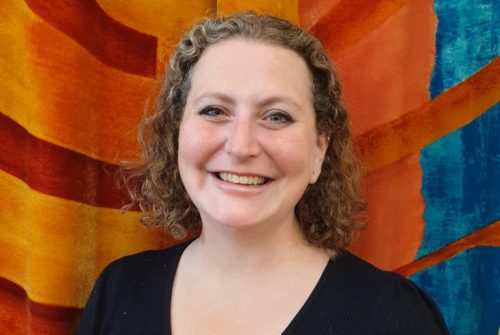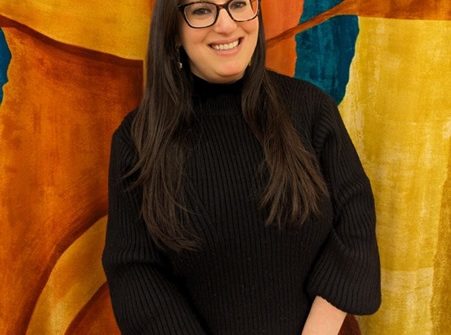Emor Sermon 2021
Edgware and Hendon Reform Synagogue
I want to tell you about what it takes to make a space sacred. And I want to consider what it would take to desecrate a sacred space.
There is a cave on Mount Meron. It is not just any cave. It is a pilgrimage site whose reputation and mystery has grown over the centuries.
And this is the place where, on Thursday night, thousands were trampled in celebrations of Lag BaOmer.
In this cave, two of Judaism’s greatest sages are said to be buried: Rabbi Shimeon bar Yochai, abbreviated to Rashbi, a tanna in 2nd Century Yavne, and his son, Elazar ben Shimeon.
Rashbi was a rebel against Rome. He criticised the imperial regime to his fellow rabbis. His colleague, Rabbi Yehudah, went straight to the Roman authorities and snitched on him. The Romans immediately promoted Yehudah and put out a bounty to kill Rashbi.
And that was how Rashbi and his son first wound up in a cave. The Talmud, written around five centuries later, says that this was a site of great miracles. There, in that grotto, a carob tree sprouted so that the two would always be able to eat. A well of water sprung out from the ground so they would always be able to drink.
Every hour of the day, Rashbi and his son sat in the sand, buried up to their necks, hiding and studying Torah. They prayed and learned their traditions. After twelve years, the prophet Elijah, known for visiting pious sages, came to the cavern’s entrance and told the rabbis that the emperor had died and they were free.
But during those twelve years of religious study, Rashbi had acquired knowledge and power far beyond what he previously knew. He went out into the world and looked upon it.
Everywhere he went, he saw sin. Wherever he laid his eyes, Rashbi shot fiery lasers that destroyed everything in sight. God called out from the Heavens that he had better get back inside the cave. He stayed again for another twelve years.
Finally, he came out from the cave and was able to participate in the world.
Many years later, Rashbi died on Lag BaOmer, the 33rd day between Pesach and Shavuot. He was buried in a cave on Mount Meron.
That was the beginning of the sanctification of the cave.
No sources say that the cave where Rashbi and his son experienced miracles was the same as the one where they were laid to rest. It takes imagination to make the connection.
Such imaginative storytelling spurred on the legend of the cave. In 13th Century Guadalajara, in northern Spain, a mystic named Rabbi Moshe de Leon published and sold a mysterious new book. He claimed it contained the secrets of the universe itself. This book was called the Zohar.
The text, said de Leon, had been written by Rashbi, a thousand years previously. He promoted a story: during Rashbi’s legendary time in that cave, he was not just a witness to miracles. He received a divine revelation.
God disclosed to him hidden meanings of the Torah. These teachings, encapsulated in the Zohar, were the foundation of an esoteric practice that we now call Kabbalah.
Over the course of centuries, such Jewish mysticism would gain ever greater traction. Disciples of Kabbalah spread, and so did the myth of the cave. As the story grew, the cave became even more holy and potent.
Three hundred years later, Kabbalah had become a movement. In the Galilee region of northern Eretz Yisrael, students of Yitzhak Luria and other great mystics assembled to learn these special teachings. They developed their own liturgy and renewed Jewish theology. They also initiated pilgrimages to sacred sites, including the tomb in the cave on Mount Meron.
In the subsequent centuries, the movement of Chassidism in Eastern Europe came to preach the importance of kabbalah. They popularised folk stories, promoted ecstatic singing and taught that there were certain special rebbes – charismatic leaders that pious Jews should follow.
They called these legendary leaders ‘tzaddikim’ – righteous ones, and considered Rashbi a prime example. They believed that praying by the tomb of a tzaddik would make God more likely to hear them. So, even in the 18th Century, when travel was difficult, Chassidim voyaged across Europe to visit Rashbi’s shrine.
Now, for more than 200 years, this cave has been a prime site for Orthodox Jews to attend and worship. In particular, on Lag BaOmer, Rashbi’s yahrzeit, the place fills up with people. In the preceding days, people camp across the mountain.
On Lag BaOmer itself, fires are lit, songs are sung and people come to celebrate from all around the world. The stories that have made the cave sacred are retold.
That was what it took to turn this cave into a sacred place. Miracles. Legends. Imagination. Revelation. Pilgrimages spanning centuries. Millennia of development of Jewish tradition.
Mostly, the cave has been sanctified by storytelling.
For the purposes of storytelling, it does not matter whether Rashbi was really granted miracles. It is of no importance whether the caves were the same.
It is even less significant whether Moshe de Leon inherited the Zohar from that ancient sage or made the whole thing up himself. What matters is the story. The Jews have turned this into a holy space by how engaging with it.
But that engagement has not been entirely for good and not every story is positive. Now comes the story of the disaster.
In 1911, just over a century ago, a catastrophe struck the cave. The roof above Rashbi’s shrine collapsed, killing 11 people and injuring many more. At the time, campaigners called for health and safety regulations to be implemented so that no such catastrophe could occur again. Their warnings were not heeded.
Rabbi Mark Solomon, one of our senior teachers at Leo Baeck College, recalls attending the pilgrimage in 1983. Even then, he said, “the crowd was so intense that I was sure I was going to be crushed to death. It was one of the scariest moments of my life.”
In the years since, the number of attendees has only grown. But, despite appeals to the government, no health and safety measures have been added. This year, with so little planning due to Covid, there were even fewer arrangements to keep people safe.
And so, on Thursday night, catastrophe struck. People were trapped in a tight space with no crowd control. They panicked. A crush ensued. People threw themselves over each other. Hundreds are in hospital or seriously injured. 44 people were killed, among them little children.
Yisrael Meir Lau, the former Ashkenazi Chief Rabbi of Israel, immediately spoke out. Like thousands of Jews, he had to check that members of his own family were not numbered among the dead.
“We could have prevented this,” he said. He insisted this was not a natural event like plague or fire, but something in which human beings had colluded. He has called for an immediate inquiry.
And that, I believe, is where the question of whether a site can be made from holy to profane begins. It begins with what story we tell next.
Mount Meron is a sacred site because it is imbued with spiritual stories. We cannot allow those stories to be replaced with memories of whitewash and cover-up. People must take responsibility and there must be changes so that nothing like this happens again.
We know from experience in Britain that the only way to heal from a tragedy is through honesty, transparency and change. We learnt this far too late from the Hillsborough Disaster and still have not seen those lessons learnt with Grenfell. When officials refuse to accept liability and instigate changes, all that remains on the sites where disaster happens is the trauma of failure.
If a site can take centuries to make sacred, it can be desecrated in an instant.
Let us pray, then, that the government, officials and religious leaders engage in serious introspection. Let us pray that real changes are made to prevent repetitions of such disasters. Above all, let us pray for recovery for the injured and the memories of the dead. May their memories be for a blessing.
Shabbat shalom.



